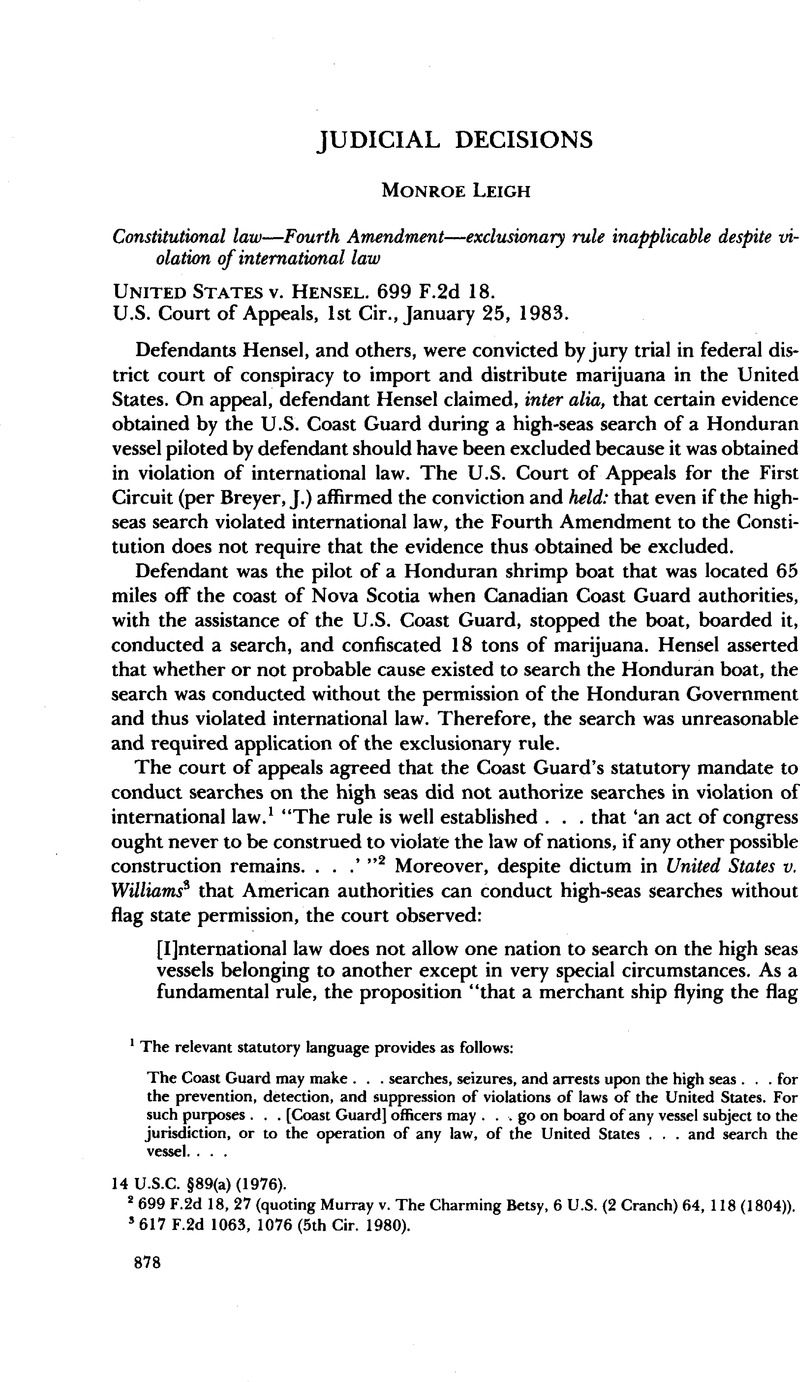No CrossRef data available.
Published online by Cambridge University Press: 27 February 2017

1 The relevant statutory language provides as follows:
The Coast Guard may make . . . searches, seizures, and arrests upon the high seas . . . for the prevention, detection, and suppression of violations of laws of the United States. For such purposes . . . [Coast Guard] officers may . . . go on board of any vessel subject to the jurisdiction, or to the operation of any law, of the United States . . . and search the vessel. . . .
U.S.C. §89(a) (1976).
2 699 F.2d 18, 27 (quoting Murray v. The Charming Betsy, 6 U.S. (2 Cranch) 64, 118 (1804)).
3 617 F.2d 1063, 1076 (5th Cir. 1980).
4 699 F.2d at 27 (quoting C. Colombos, The International Law of the Sea 311 (6th ed. 1967)).
5 13 UST 2312, TIAS No. 5200 (entered into force September 30, 1962). The Convention allows the search of another state’s flag ship on the high seas if the searching authority (1) suspects that the foreign ship is engaged in piracy or slave trade, or that the ship is in fact a domestic vessel, (2) is engaged in hot pursuit, (3) has obtained the permission of the flag state, or (4) believes the foreign ship threatens the security of its own nation. Id., Arts. 14–23.
6 699 F.2d at 29.
7 United States v. Caceres, 440 U.S. 741 (1979); United States v. Giordano, 416 U.S. 505 (1974).
8 431 U.S. 606(1977).
9 699 F.2d at 30 (quoting United States v. Cadena, 585 F.2d 1252, 1261 (5th Cir. 1978)).
10 699 F.2d at 30. The court also rejected the arguments of Hensel and his codefendants regarding hearsay, sufficiency of the evidence and procedural defects at trial. See id. at 30–41.
11 397 U.S. 150 (1970).
12 12 M. J. 253 (1982), summarized in 76 AJIL 624 (1982).
13 4 UST 1792, TIAS No. 2846 (entered into force Aug. 23, 1953).
14 UN Doc. A/CONF.62/122 (Oct. 7, 1982) (opened for signature Dec. 10, 1982), reprinted in 21 ILM 1261 (1982).
15 “Warship” is defined as a ship “belonging to the armed forces of a State bearing the external marks distinguishing such ships of its nationality, under the command of an officer duly commissioned by the government of the State . . . and manned by a crew which is under regular armed forces discipline.” Id., Art. 29.
16 Id., Art. 110.
17 Id., Art. 111.
18 Ibid.